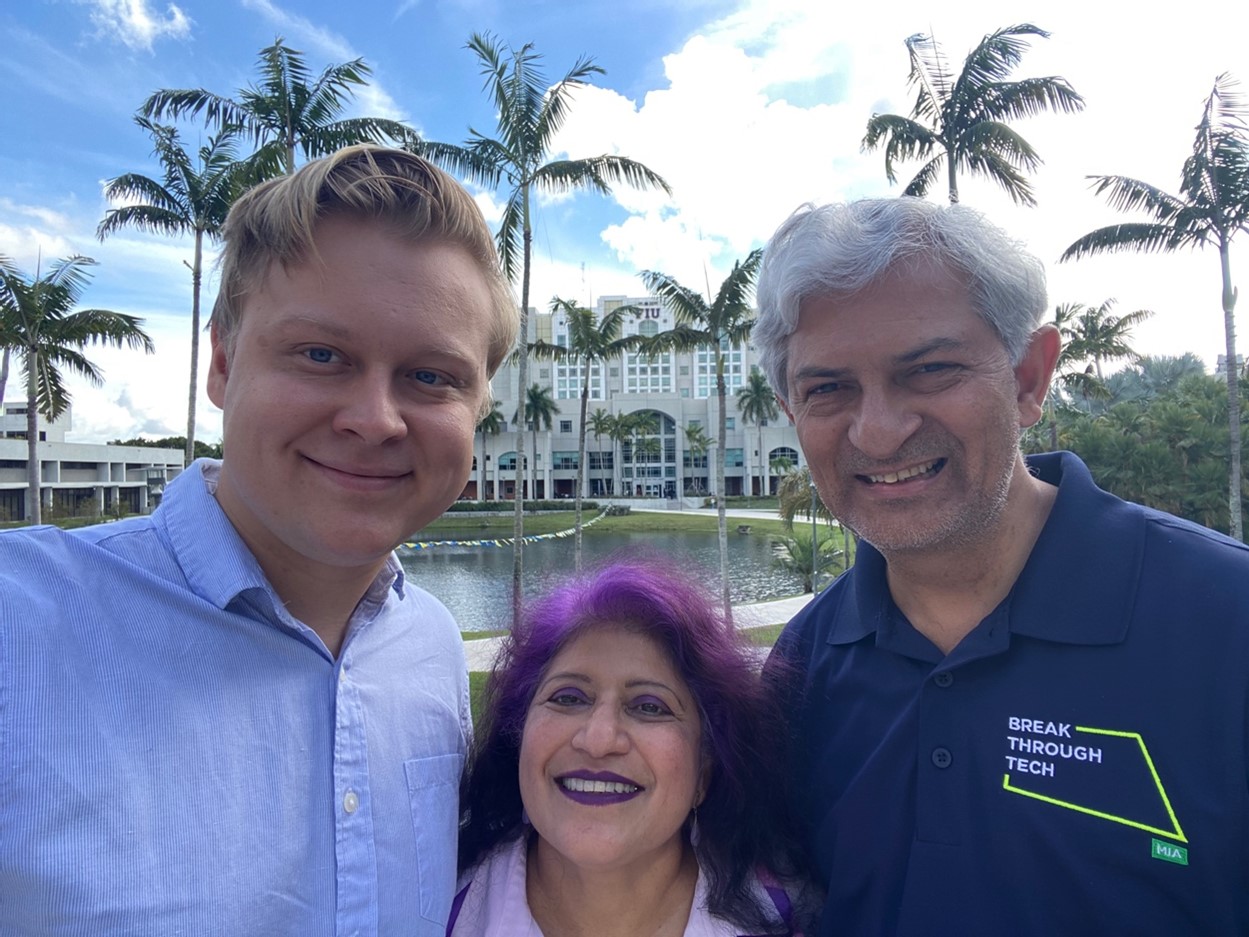Behind the research: MeRRCI (Metagenome, metaResistome, metaReplicome for Causal Inferencing)
Posted on December 20, 2022 by Vitalii Stebliankin
PhD candidate Vitalii Stebliankin goes behind the scenes of his latest research, 'A novel approach for combining the metagenome, metaresistome, metareplicome and causal inference to determine the microbes and their antibiotic resistance gene repertoire that contribute to dysbiosis' in Microbial Genomics, which introduces a novel approach to determine the microbes and their antibiotic resistance gene repertoire that contribute to dysbiosis.
Tell us a bit about yourself and your work.
I am a computer science PhD student at Florida International University (FIU) in the USA, in the Bioinformatics Research Group (BioRG) – a diverse multidisciplinary team of bioinformatics, machine learning, software engineering, and molecular biology experts. We develop novel tools and techniques for large-scale bioinformatics analysis. My research focuses on machine learning applications to multi-omics data and data from protein structures and complexes.

Microbiome BioRG team on the Florida International University campus.
From left: Vitalii Stebliankin, Prof. Kalai Mathee, Prof. Giri Narasimhan
What is your research about and why is it important?
Our new pipeline MeRRCI (Metagenome, metaResistome, metaReplicome for Causal Inferencing) provides a fresh perspective on multi-omic microbiome data analysis. Microbiomes are communities of microbes, including bacteria, archaea, protists, fungi, and viruses, that inhabit an environmental niche. Those communities communicate, cooperate, compete, multiply, share, and even kill as part of an ecosystem while expressing various genes, proteins, and metabolic products. Typical analysis of microbiomes includes processing samples to extract multi-omic data from metagenomic sequencing, metatranscriptomic expression, metabolomic, metaproteomic, and more. The “metagenome” is the foundation of any microbiome study providing the abundance profile of the microbial community.
The gut microbiome plays an essential role in human health, helping us to digest food, regulate the immune system, and make new products. However, the delicate balance in the microbial ecosystem can get disrupted, causing malfunctions in the human host. For example, frequent use of antibiotics results in the rapid development of bacterial multi-drug resistance. Therefore, it is essential to analyze the causes and effects of antibiotic resistance and microbiome balance to develop targeted strategies for pathogen treatment. Our research brings in a relatively new omics player, the “metaresistome”, which allows us to capture the resistance capabilities of a microbial community.
The microbial community dynamics can be effectively captured by inferring which bacterial taxa in the community may be replicating. Recent work on measuring bacterial replication has made it possible for us to rope in yet another omics data, the “metareplicome,” which allows us to capture the replicating profile of a microbial community.
The MeRRCI pipeline enhances the standard microbiome analysis by integrating metagenomic, metaresistomic, and metareplicomic data to distinguish correlations and causal associations computationally. The method consists of two parts. First, we calculate microbiome properties from the whole genome sequencing data, such as bacterial composition, rate of replication, and collection of antibiotic-resistant genes. Second, our framework comprehensively analyzes potential causal connections between computed measures and clinical variables. We use the Bayesian network theory to rule out accidental correlations and highlight associations that are likely to be causal. For example, we analyzed preterm infant gut microbiomes and found the most influential antibiotic-resistant factors of Klebsiella pneumoniae, Enterobacter hormaechei, Citrobacter freundii, and other pathogens. In addition, the presence of Clostridium perfringens may explain necrotizing enterocolitis (NEC) in premature babies.
What does a normal day in the lab look like?
Our lab takes advantage of our research's computational nature, allowing for remote work. Members of the BioRG team can be found working at the campus fountain, at the beach, or even in the Hawaiian mountains. However, the laboratory is still a popular place to focus and discuss new ideas. We are constantly striving to expand bioinformatic tools to address real-world problems. Our discussions are energizing that egg us on.

Remote work photo compilation.
What do you hope the future implications of your research will be?
We hope that microbiome studies will use our pipeline with whole genome sequencing data to predict the causal relationships between microbiome entities and environmental factors. For example, antibiotic resistance studies can use our pipeline to infer the most critical resistance genes and environmental factors that help bacteria survive drug exposure. In addition, it can identify pathogens that are in low abundance before it becomes a menace. Furthermore, MeRRCI can estimate the changes in replication rate upon environmental stress, such as antibiotic exposure, providing insights into the dynamics of the microbial communities. Finally, our work can be adapted for personalized pathogen-related treatments for hospitals with next-generation sequencing technologies, potentially saving lives. Given the information about specific microbes and resistant genes in the patient’s gut, our approach can help estimate the effect of treatment and choose the best strategy to fight the pathogen.
